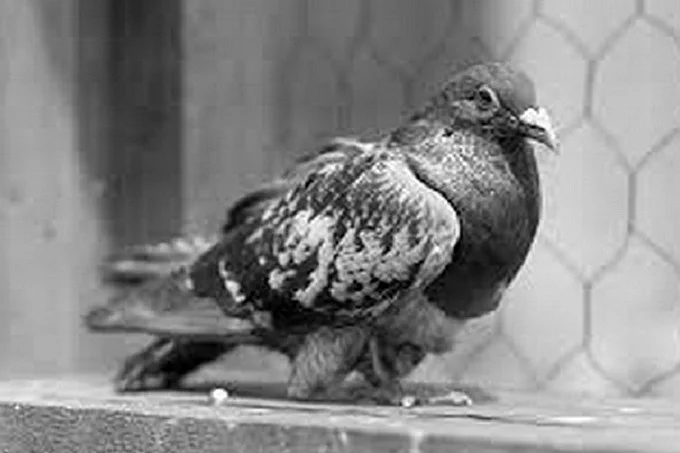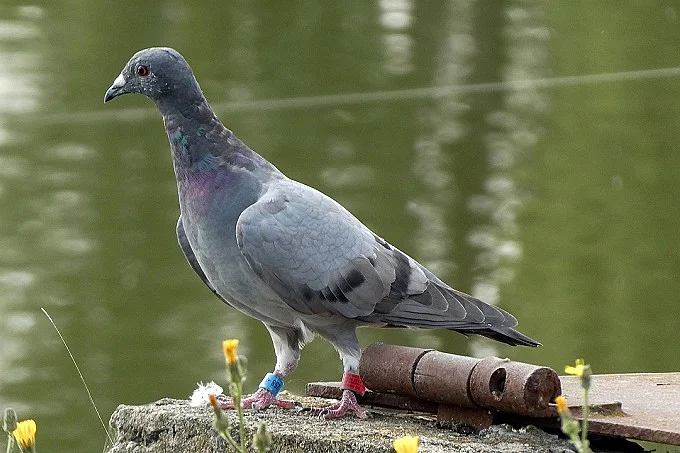Who used carrier pigeon in 20th century and how did a pigeon save entire battalion?

Carrier pigeon has played a huge role in the history of mankind, and It was not just entertainment. The ancient Greeks, in this way, informed about the winners of the Olympic Games, the rulers of different countries and different eras took advantage of this information transfer by air, and financiers, having received information at the right time with Carrier pigeon, made huge fortunes.
One brave pigeon in 1918 saved an entire battalion of 194 people and was awarded the French Military Cross.
Carrier pigeon: how it works
Reading about magical owls in the books of the Potter is, of course, fascinating, but in the real world, it turns out, there are “Buckles”. In any case, the importance of the work of carrier pigeons cannot be overestimated. Real people were once waiting for them with the same impatience and excitement as the heroes of J.K. Rowling’s books, who depended on owl mail. Unless the address of delivery of a letter to a pigeon cannot be “ordered” – otherwise, these birds, perhaps, are not inferior to the feathered heroes of the saga.
Different breeds of these birds are suitable for “work” as a carrier pigeon. The main thing in the preparation of a feathered courier is the selection of the most suitable individuals and their correct training.
This type of postal communication is based on the amazing ability of pigeons to return to their native nest over long distances – in history, there are examples of the delivery of letters by pigeons at a distance of up to 1000 kilometers. The usual range of such a flight is up to three hundred kilometers.
Pigeons fly, guided by the Earth’s magnetic field, but they need to be released in open space – among the mountains or in the forest, the bird can “get lost”. In-flight, the pigeon keeps at an altitude of about 100 – 300 meters above the ground. Birds fly in a straight line to get rid of the load as soon as possible.

A special tube with a message inside (sometimes a goose feather cut was used as a “case”) is attached to the pigeon’s foot. Birds are transported to the place of sending messages in special cages, trying to minimize travel time and contact with human hands: if you take a bird, for example, at the wrong time, it may not fly back to the nest at all.
Good postmen require a lot of freedom – this is useful for developing orienteering skills and for decent physical shape. These birds have one more interesting feature – they do not react very strongly to shots, which means they can do their “post” work even in war conditions. People, of course, could not help but take advantage of this.
In wartime conditions
There is information that carrier pigeons informed the ancient Egyptians about the flooding of the Nile, and the ancient Greeks – about the outcome of the Olympic Games. This type of communication was used by the Phoenicians, Persians, Romans, even South American Indians – and not only in peacetime, but also in wartime – mainly in wartime!
According to the tale, it was thanks to the dove that delivered the letter about the victory over Napoleon at Waterloo that Nathan Rothschild carried out the financial transactions that made him a fabulously rich man. But it happened that the birds carried out the most realistic military service under a hail of bullets.
Here is what information has been preserved since the siege of Paris during the Franco-Prussian war of 1870-1871. When the French capital was cut off from all communications with the rest of the world, carrier pigeons became real salvation.
The delivery of birds by air balloon was arranged, and the nearest pigeon “base” was located in Tours, two hundred kilometers from Paris. In the city, for several months, the sending and receiving of golubegrams (Messages transmitted by Pigeons)) was organized – the pigeon post office, and both official, military, and private dispatches were sent – however, the latter were rather in addition to official messages – pigeons were not sent as couriers for only one private correspondence.
To combat this type of mail, the Prussian troops used hawks. Pigeons often died from bullets – this happened in any military conflict. A pigeon named Cher Ami, already during the First World War, was able to carry a message under the bullets from a French battalion surrounded by enemies, at which both their own and aliens were shooting. The two pigeons that remained at his disposal died while trying to fly away to his own people. Only Cher Ami remained, who, having received serious injuries on the road (he lost an eye and a leg), reached his destination. The battalion – 194 people – was saved, and the heroic bird received the best treatment for that time, after which it was awarded the Military Cross.

Pigeon mail for a peaceful life
But even for peaceful, civil, needs, pigeons at one time were practically indispensable as a means of communication. We are talking primarily about the times when the world was not yet familiar with radio and telegraph, but even then, there was work for the bird-postmen.
At the turn of the 19th and 20th centuries, New Zealand organized the first, it is believed, regular pigeon mail, arranging communication between Auckland and several islands. This was the “pigeongram service”, which included, among other things, its own stamps – they were paid for upon departure. Then the most famous was a pigeon named Velocity, that is, “speed”, he covered a distance of 125 kilometers in 50 minutes.
The same type of postage existed on the Hawaiian Islands, where letters and even money were sent with pigeons. But the German pharmacist Julius Neubronner sent medicines by pigeon mail to a sanatorium located nearby.
In 1907, he realized an even more interesting idea, tying together two of his hobbies – training pigeons and photography. Neubronner fixed on one of the birds a small camera with a clock mechanism installed on it – a timer, resulting in an example of pigeon photography – the prototype of modern drone photography.

With the camera, the pigeons flew lower than with ordinary letters, and it occurred to the inventor that his idea could be useful for practical purposes as well. Having received a patent, he began to deal with the equipment of mobile dovecotes with photo laboratories, suggesting that this method of aerial photography would be useful again for military needs. For some time, it was, but the 20th century brought the rapid development of aviation technology into the life of mankind, and the need for pigeons “drones”, soon disappeared.
However, the pigeon carrier was not forgotten, despite the development of technology and means of communication: for example, newspaper reporters in the second half of the last century resorted to the services of pigeons to deliver emergency messages to the editorial office – it came out faster than transporting material through city traffic jams.




